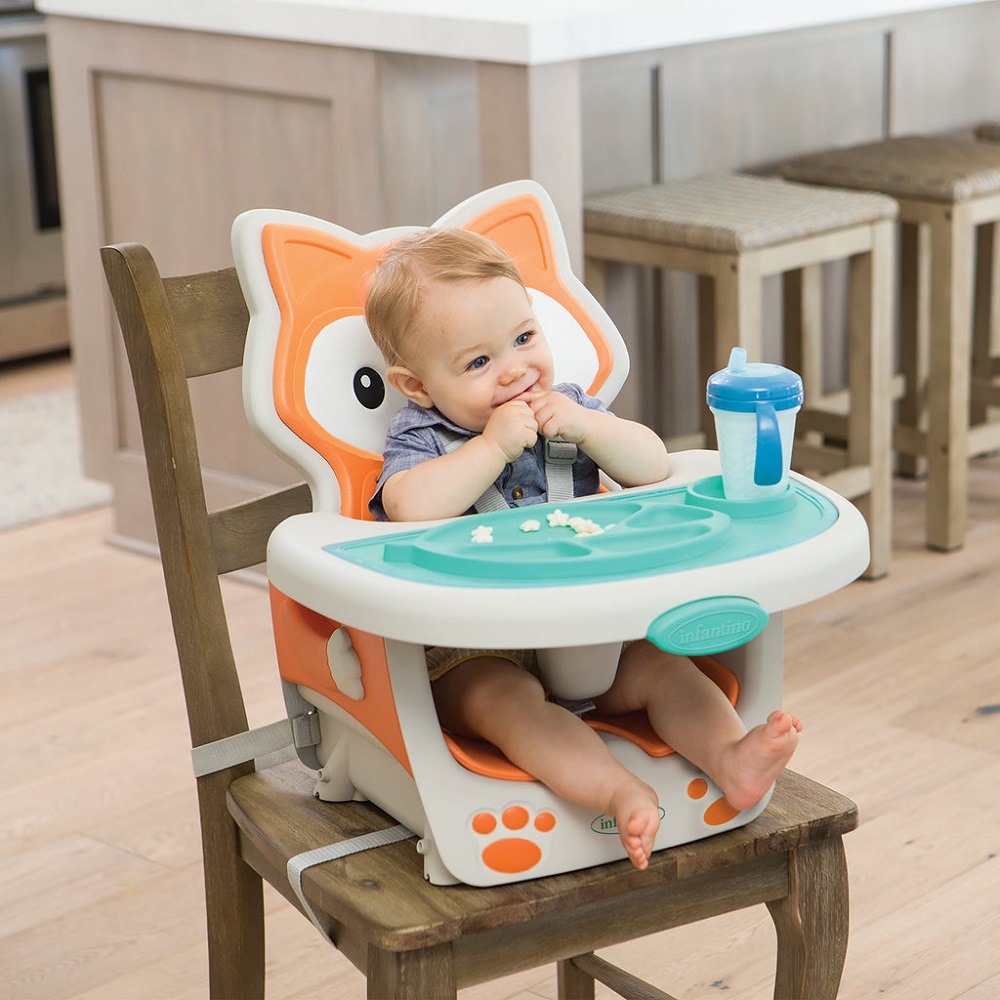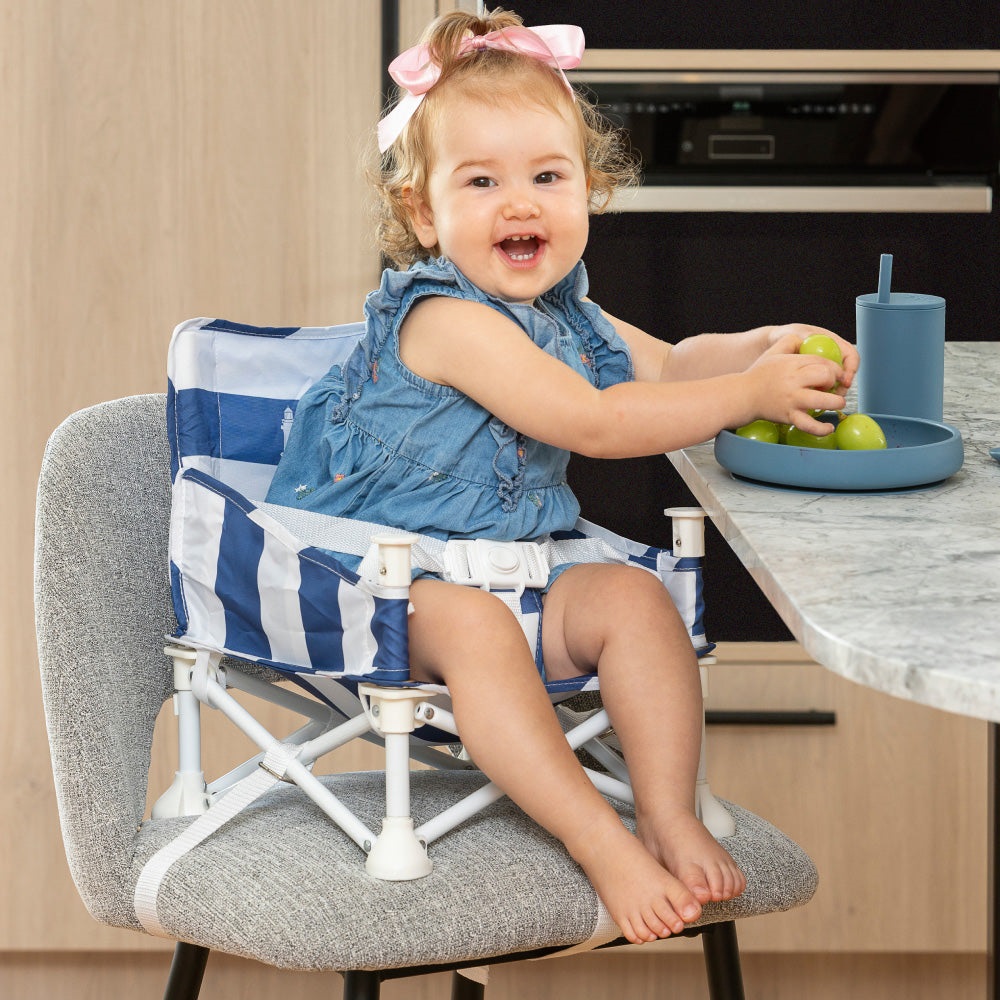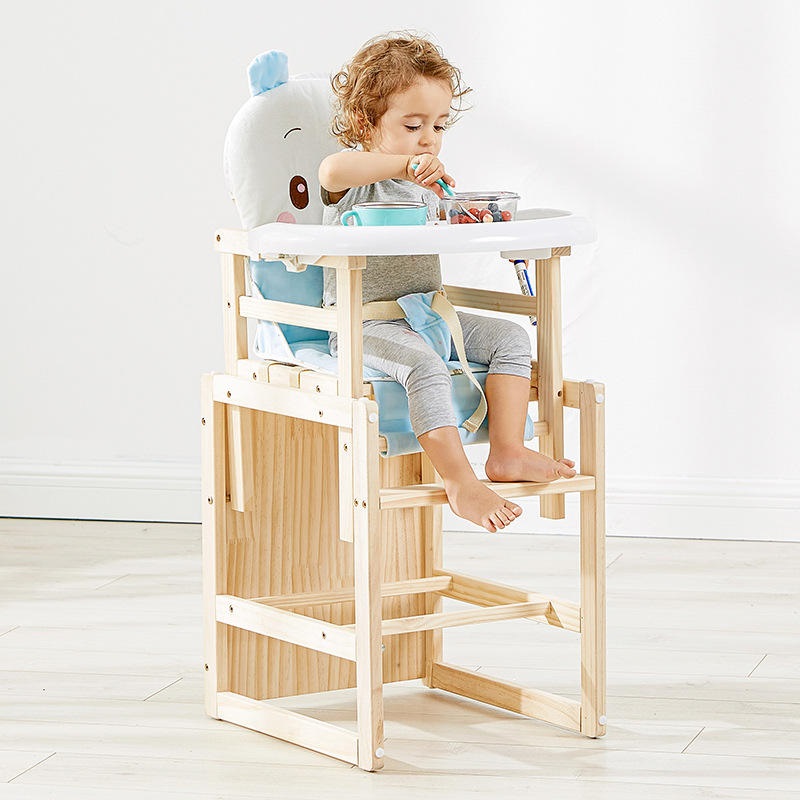Introduction to High Chairs for Infants
When it comes to feeding time, a high chair is a staple in many households with infants. From the moment you introduce solid foods, a high chair becomes an essential tool for your baby’s mealtime. It’s not just about convenience; high chairs are designed to provide a safe, comfortable place for your little one to eat and interact with the family.
As parents, choosing the right high chair is crucial to ensure your baby’s safety and comfort. You might be wondering how long can a baby sit in a high chair throughout the mealtime routine. The answer varies, depending on the baby’s age, development, and the high chair’s design.
Typically, infants are ready for high chairs when they can sit up unassisted. This ability usually develops around the age of 6 months. Once they can sit up, they are ready to join the rest of the family at the table. But it’s not only about age. Ensuring that the high chair is adjusted correctly for their size and that they are secured properly with harnesses are key steps in high chair safety.
In this blog, we’ll discuss the ideal durations for high chair use, what to consider when making the switch to a high chair, and how to recognize your baby’s readiness. With the right approach, you can make mealtimes a positive and safe experience for your little one. Stay tuned for more insights on how to incorporate the high chair into your baby’s routine safely and effectively.

Safety First: When to Start Using a High Chair
When it comes to infant safety, knowing when to start using a high chair is crucial. It is essential to ensure that your baby can sit up unassisted before introducing them to a high chair. This milestone generally occurs around the six-month mark but can vary.
Parents should also consider the design and features of the high chair. Ensure it provides sturdy support and a secure harness system to keep your baby safe during mealtime. Watch for any signs of discomfort or difficulty in maintaining posture, as these may indicate that it’s too early for high chair use.
Another aspect to consider is the amount of time your baby spends in the high chair. Initially, keep sessions short to acclimate your baby gradually. Monitor your baby closely for any signs of distress or tiredness from sitting up.
Always prioritize safety over convenience when deciding the right time for your baby to start using a high chair.
Optimal Durations for High Chair Use
Understanding how long a baby can sit in a high chair is crucial for their comfort and safety. The optimal duration varies based on several factors including the baby’s age, their physical development, and individual comfort levels.
For Infants (6 to 12 months)
At this early stage, babies are just getting accustomed to sitting up and participating in mealtime. During this period, keep high chair sessions short. Start with 5 to 10 minutes and gradually increase as your baby shows more comfort and stability. This gradual increase helps prevent any discomfort or strain.
For Toddlers (1 to 3 years)
As your baby grows into a toddler, their endurance and interest in sitting at the table increase. Toddlers can usually manage to stay in a high chair for up to 20 to 30 minutes. At this age, they’re more engaged in eating and interacting. However, watch for signs of restlessness or discomfort, which might suggest it’s time for a break.
For all ages, ensure that the high chair use does not exceed the time during which the baby remains happy and comfortable. Always prioritize your baby’s signals over a fixed time session. Frequent breaks and changes in activity help maintain a positive mealtime experience.
Recognizing Signs That Your Baby is Ready
When considering transitioning your baby to a high chair, recognize the readiness signs. These are vital to ensure their safety and comfort during mealtime.
Physical Ability
The primary sign to look for is your baby’s ability to sit up on their own. Typically, this occurs around six months. If your baby can maintain an upright posture without support, they might be ready to start using a high chair.
Interest in Food
A keen interest in food is another marker of readiness. If your baby watches you eat, reaches for your food, or seems excited during your meal times, it’s likely a good time to introduce them to a high chair.
Interaction and Engagement
Engagement in family meal times can also indicate readiness. If your baby enjoys being part of the group at the table, using a high chair could enhance their experience.
Always monitor these signs closely to decide when your baby is ready for a high chair. It’s also essential to ensure the high chair is safe and fits your baby properly to avoid any risks during mealtime.

Transitioning to a High Chair: Tips and Tricks
Transitioning a baby to a high chair needn’t be stressful. Keep these simple tips and tricks in mind to make the process smooth and safe for your infant:
Start Gradually
Begin with short periods in the high chair. This can help your baby get used to the new experience without feeling overwhelmed.
Ensure Proper Harnessing
Always secure your baby with the harness every time you use the high chair. A snug fit is key to safety.
Adjust as Needed
Make sure the high chair’s height and other adjustable features fit your baby’s size. Comfort leads to a happier, more engaging mealtime.
Stay at Eye Level
Keep the high chair close to the family table. Eye contact helps your baby feel included and can encourage eating and interaction.
Keep Them Engaged
Place safe, interesting objects on the tray to explore. This can keep your baby’s attention during times they are not actively eating.
Be Patient
Understand that each baby adapts differently. Give your baby time to adjust to the high chair at their own pace.
Consistent Routine
If possible, use the high chair at the same mealtimes each day. This consistency helps establish a routine, making transitions easier.
Supervise Always
Never leave your baby in a high chair unattended. Supervision ensures immediate action can be taken if needed.
By incorporating these tips, the question of ‘how long can a baby sit in a high chair’ becomes less daunting. Tailoring the duration according to your baby’s comfort level is key. With patience and attention to your baby’s cues, high chair time can become a safe and enjoyable part of their daily routine.

Recommended High Chair Features for Different Ages
When picking a high chair, age-appropriate features are key. This means choosing a chair that can grow and adapt with your little one from infancy through their toddler years. Here’s what to keep an eye out for at each stage:
For Infants (6 to 12 months)
- Safety Harness: A 5-point harness is best for infants.
- Recline Feature: Allows baby to lean back safely when they cannot sit upright for long.
- Sturdy Base: A wide, stable base prevents tipping.
- Easy to Clean: Removable trays and wipeable materials make cleanup simple.
For Toddlers (1 to 3 years)
As your child grows, they’ll need a bit more freedom. Consider chairs with:
- Adjustable Seats: Height adjustments help position your toddler correctly at the table.
- Convertible Design: Some high chairs convert to booster seats or toddler chairs.
- Activity Tray: Space for snacks and toys keeps toddlers busy between bites.
- Footrest: For added comfort as their legs grow.
By selecting a high chair with these recommended features, you ensure not only the comfort and safety of your baby but also a chair that can be a part of many more family memories to come. Remember, the keyword ‘how long can a baby sit in a high chair’ aligns closely with ensuring the chair accommodates their developmental stages.
Common Mistakes to Avoid with High Chair Use
When using high chairs for babies, some common oversights can lead to discomfort or safety issues. Here are key mistakes to steer clear of:
Choosing the Wrong Time to Start
Starting too soon, when your baby can’t sit up on their own, risks their safety.
Ignoring Harness Features
Not using or improperly fastening the harness poses a major safety hazard. Always ensure it’s snug and secure.
Overlooking Chair Adjustability
Failing to adjust the high chair as your baby grows can lead to discomfort and improper posture.
Allowing Extended Sitting Periods
Letting your baby sit for too long can cause discomfort. Watch for signs of unease.
Positioning Away From Family
Isolating your baby during meals can make them feel left out. Always keep the high chair close to the family table.
By avoiding these common mistakes, you can ensure a safe, comfortable, and joyful mealtime experience for your little one.
Alternative Seating Options as Baby Grows
As your baby develops, their seating needs will change. It’s important to be aware of alternative seating options that suit their growing bodies and increasing independence. Here are some options to consider:
- Booster Seats: Once your toddler outgrows the high chair, a booster seat can be a good next step. It raises them to the proper height at the dining table.
- Junior Chairs: These are small chairs designed for older toddlers and preschoolers. They sit at the table without any additional height but have the right size for little ones.
- Portable High Chairs: Great for families on the move, these chairs attach to dining chairs or sit on tabletops.
- Adjustable High Chairs: Some high chairs are designed to grow with your child, converting into a toddler seat or even a regular chair.
- Floor Seats: They allow babies to sit on the floor and play while still being supported, great for playtime.
Remember to always consider your baby’s current abilities and comfort, as well as your own convenience and space requirements when selecting a seating option. Safety always comes first; make sure whatever alternative you choose complies with current safety standards and features appropriate restraints. Keep in mind how long can a baby sit in a high chair when considering when to transition to new seating arrangements, to ensure they are ready for the change.
